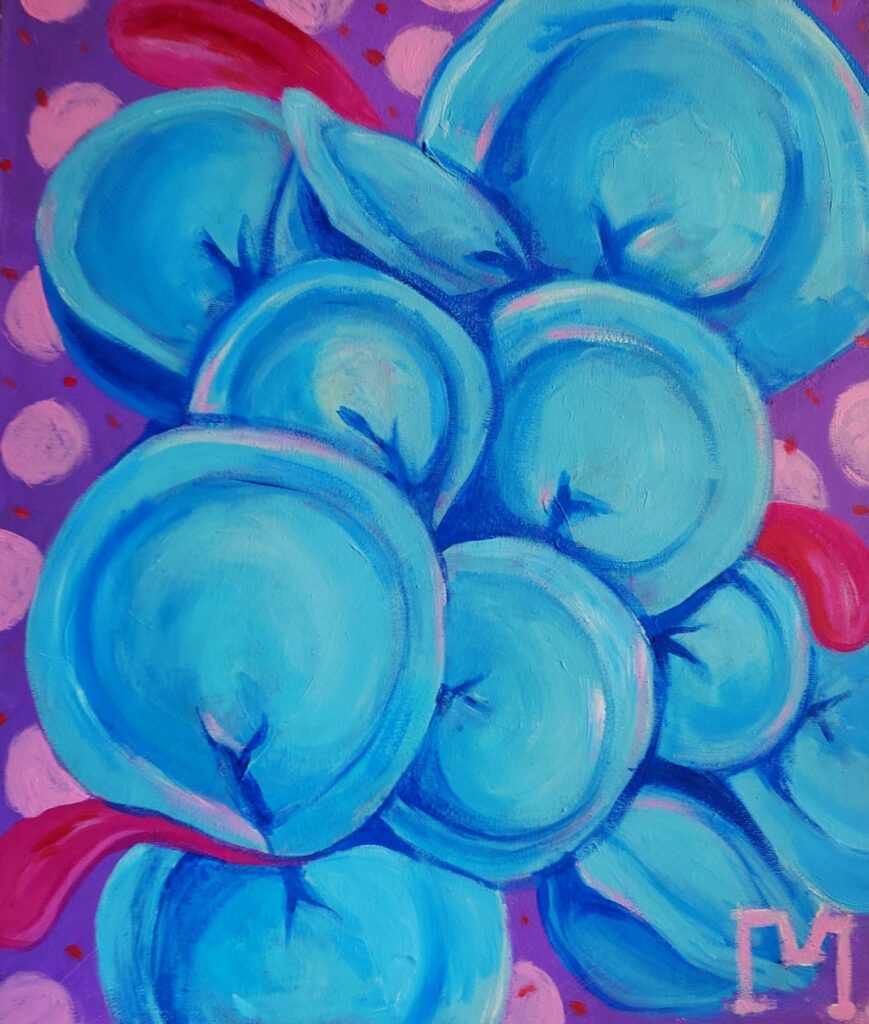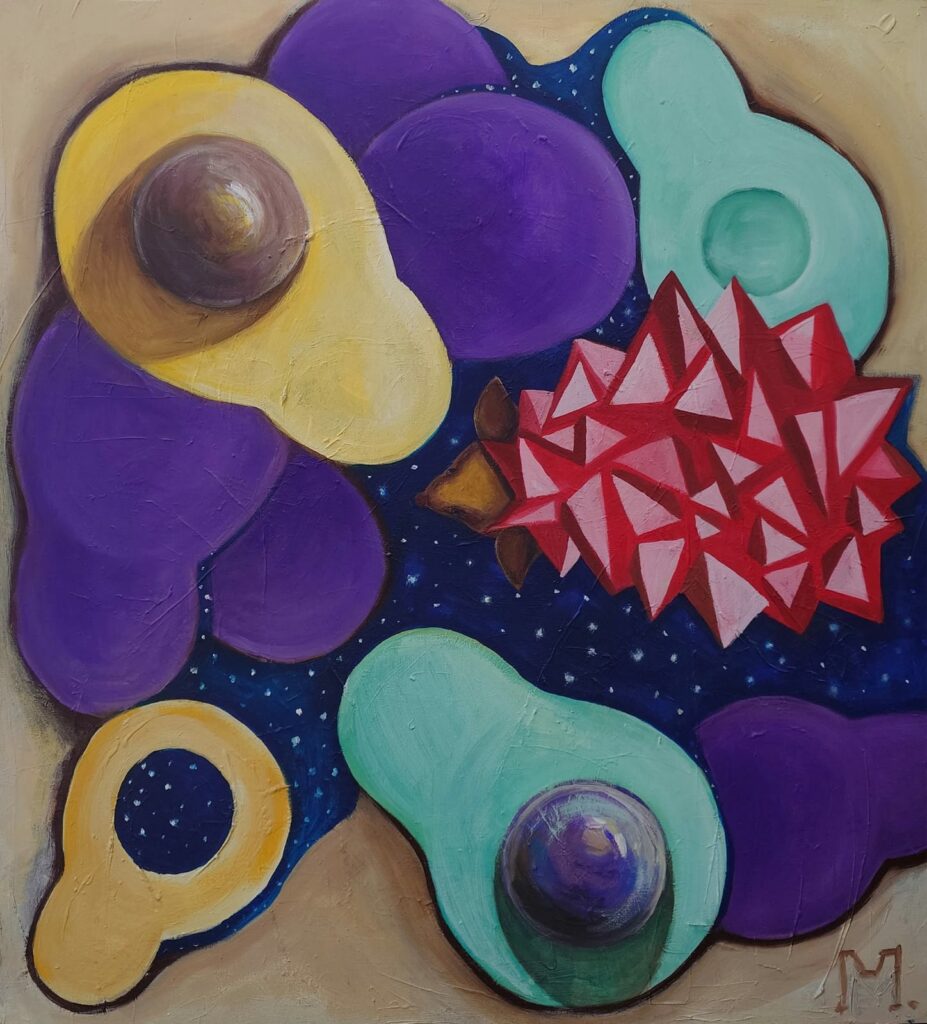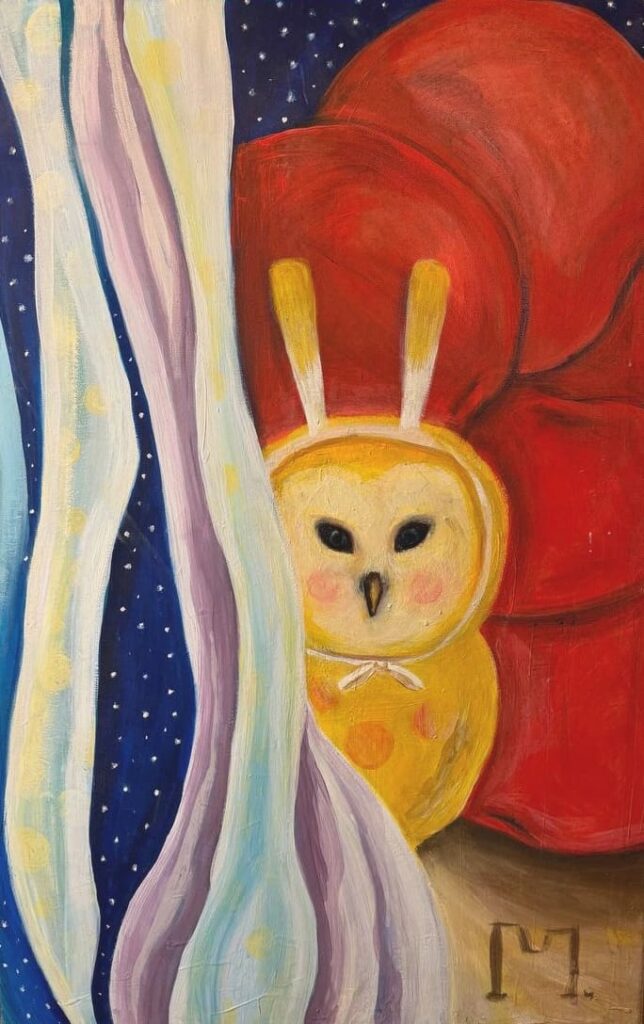Vitaly Mikheev
Year of birth: 1989.
Where do you live: Petropavlovsk-Kamchatsky.
Your education: Higher education, environmental design.
Describe your art in three words: Color, concept, thought.
Your discipline: Art.
Website | Instagram
Can you tell us about your journey into the world of art and how it began in Petropavlovsk-Kamchatsky?
From a very young age, around three years old, I loved to draw. I remember the first time I took a pencil in my hand and decided to draw a postcard for my dad for February 23rd. He was sailing on a ship to the USA at that time, and upon his return, my mom and I gave him this postcard, which had graphic elements. Dad was very happy, and my mom and dad then said, “He will be an artist!”
How did your education in graphic design and environmental design influence your artistic style?
Graphic design directly influenced me. At that time, I was very passionate about studying art history, especially the history of pop art, the history of Andy Warhol and his followers. And, I think design reflected in my work primarily in the color scheme. I prefer pure colors without excessive restraint. Design also influenced the concentration, naming, and combination of all elements. I can’t say that I directly copied something, but I think it all settled somewhere in my subconscious.

Could you share more about the art project “Next Line” that you organized in Siberia? What impact did it have on the local art community?
The “Next Line” project emerged because I initially participated in exhibitions of the Artists’ Union and at some point, I realized that it looked somewhat outdated – the concepts of the exhibitions were slightly outdated. So, my creative friends and I decided to organize a project that any artist could join, from painters and sculptors to designers, dancers, musicians, and so on. I found various locations from bookstores and cafes to abandoned premises and galleries where we held joint exhibitions. It was progressive and conceptual for that time. I consider it a very successful project; we still communicate and fondly remember those times. We repeatedly engaged in the city’s social projects entirely on a voluntary basis. We didn’t receive any grants from this but got pleasure out of it.
What draws you to the pop-surrealism style, and how do you interpret this style in your works?
Honestly, at first, I didn’t understand that my direction belonged to the pop-surrealism style. I just had inspiration, I painted, painted, and accumulated a certain number of works. One day a critic told me that my work was very similar to this style. I began to study it and realized that yes, it really is. It is a very progressive modern American style that intersects with pop art, which I always liked, so it is close to me. I really like the colors of this direction; they are usually bright and juicy. And I like that with a combination of bright colors, there can be very complex content. The paintings can address both serious social issues of life and personal ones, and all this comes together as a whole. A person can look at the painting and think it’s just a bright picture, but in reality, the meaning can be completely different. The visual can differ from the meaning, and you need to dissect elements, hints to understand what I wanted to say.
How does your travel experience influence your artwork?
Traveling is a crucial part of my work. For me, it’s an exchange of experiences, broadening horizons, and getting acquainted with new cultures and traditions. For example, before my first trip to Mexico, I didn’t realize that I could exhibit my paintings. I just painted because I had inspiration and the desire to paint. In Cancun, I visited a local artist’s gallery, and his work made an impression on me, they were bright, juicy with an interesting direction and technique. I realized that you can see the world more vividly. From that moment, I defined my style and understood that I was moving in the right direction. Now I am confident in my style, paintings, and art.
As the director of the “KAPUSTA” design studio, how do you balance your roles as an artist and a leader?
I have been organizing exhibitions since 2009, and the design studio appeared in 2012. I was engaged in both simultaneously. I was a freelance designer, working on several jobs at once. Design was not my main activity. 2012 was a turning point, of course, I started painting less because I had to manage processes, strategies, and development. Plus, communicating with clients… There were many different nuances that I had to resolve. At that time, I was tired like any ordinary person, but nothing prevented me from painting at night. In such difficult, stressful moments, I would just come home and start painting. I could paint for days. Nothing stopped me, I easily deal with such moments.
As long as I have impulses from my head, I create.
I want to talk about the process of creating paintings. I never prepare sketches in advance. All the paintings are created directly on the canvas, in the moment. I can finish it within a year. But all the key moments are immediately written down while it’s still in my head. As a rule, all these pictures, motifs, plots for paintings come in the moment of some interesting situations in life. I get an image in my head, or I observe people. Most often people create some moments and scenes. Or maybe I see some situation in the gym, I work out – I look at people, they do something, and I always imagine in my head some kind of image. From which a new work is born. Most often people argue or make peace. In any case, they give emotion. Everything comes together, I don’t know how it works, but the result is a painting.





Leave a Reply